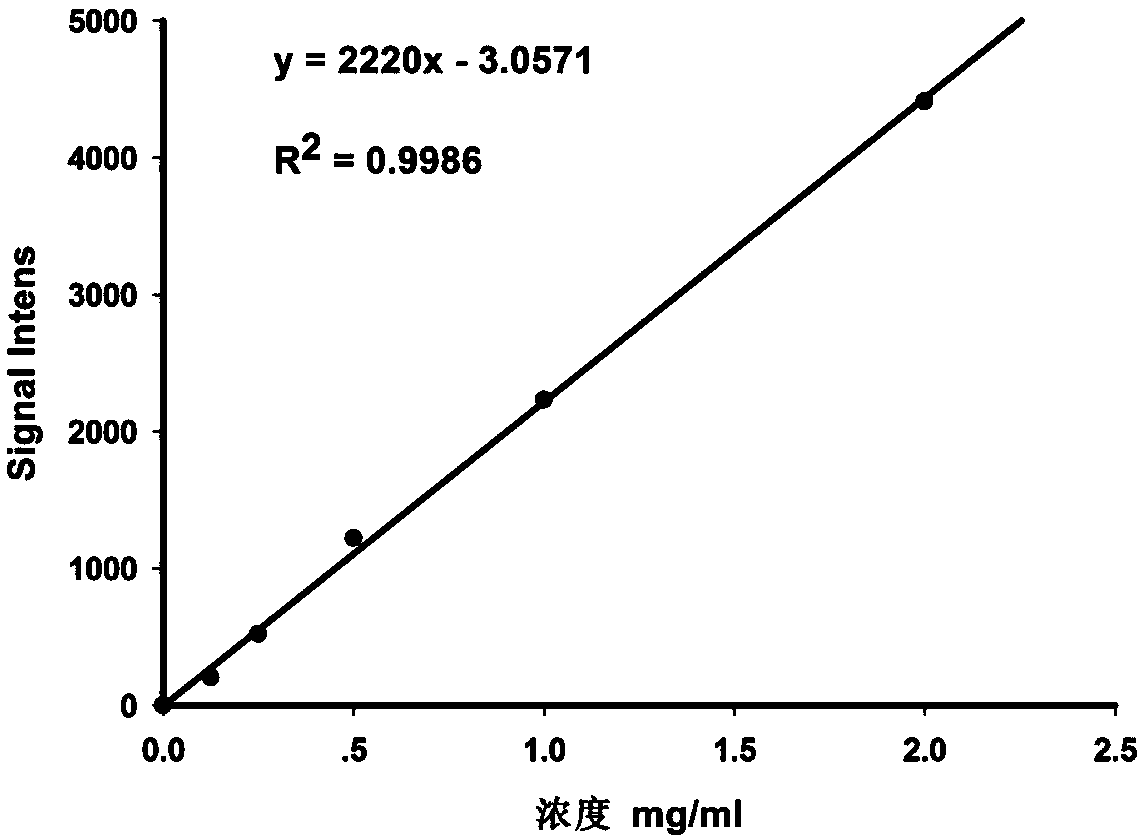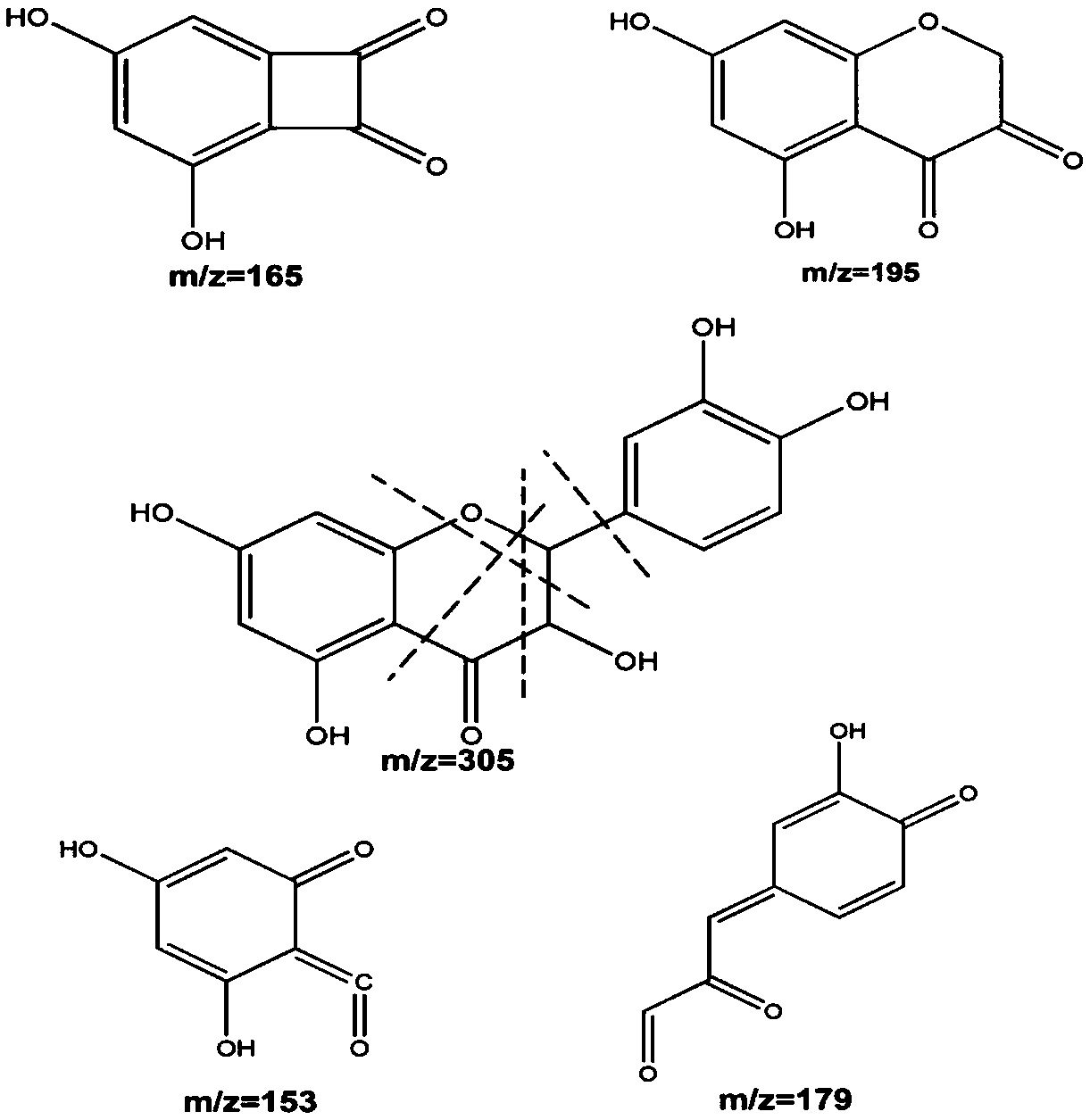A method for the identification of dihydroquercetin in larch by capillary electrophoresis-mass spectrometry
A technology of dihydroquercetin and capillary electrophoresis, applied in the field of analysis and identification of dihydroquercetin, can solve the problems of high analysis cost, long detection time, and large sample usage, and achieve high experimental repeatability and sample usage The effect of small amount and high precision
- Summary
- Abstract
- Description
- Claims
- Application Information
AI Technical Summary
Problems solved by technology
Method used
Image
Examples
specific Embodiment
[0029] (1) Using methanol as a solvent, prepare dihydroquercetin standard solutions at concentrations of 2000, 1000, 500, 250, and 125 μg / mL, respectively.
[0030] (2) Inject the sample in the capillary electrophoresis instrument, use 20mbar to inject the sample for 2s, and perform electrophoresis under the condition of 20kV. The ultraviolet wavelength is 214nm, the column temperature is 25°C, and the buffer salt is 20mmol ammonium acetate solution; / MS full scan, nitrogen flow rate 15psi, helium 7psi, gas temperature 300°C, separation voltage 3.0kV, sheath fluid using 50% methanol solution (containing 0.01% ammonium acetate), flow rate 100nL / min, pump flow rate 0.4L / min, the split ratio is 100:1, each concentration is loaded repeatedly 3 times, the peak area is integrated and calculated with Chemstation software, and the standard curve is drawn according to the obtained results. The results are shown in figure 1 , and measured the lowest detection limit of 15.6pmol.
[0031...
PUM
 Login to View More
Login to View More Abstract
Description
Claims
Application Information
 Login to View More
Login to View More - R&D
- Intellectual Property
- Life Sciences
- Materials
- Tech Scout
- Unparalleled Data Quality
- Higher Quality Content
- 60% Fewer Hallucinations
Browse by: Latest US Patents, China's latest patents, Technical Efficacy Thesaurus, Application Domain, Technology Topic, Popular Technical Reports.
© 2025 PatSnap. All rights reserved.Legal|Privacy policy|Modern Slavery Act Transparency Statement|Sitemap|About US| Contact US: help@patsnap.com



